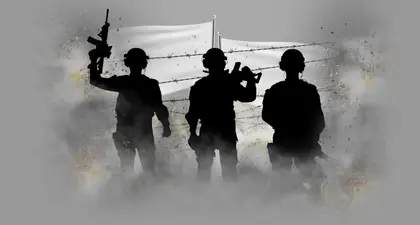On some days, the news coming from the east and south of Ukraine is so tragic that even the air seems to stop moving. It grows dark and stuffy, and one’s lips can no longer form any kind of smile.
That was how it felt hearing reports of the deaths of Ukrainian prisoners of war from the Azov regiment – the soldiers who defended Mariupol and surrendered on the orders of the Ukrainian Commander in Chief.
JOIN US ON TELEGRAM
Follow our coverage of the war on the @Kyivpost_official.
Russia claimed that the prisoners died when a Ukrainian missile hit the prison building where they were being held. However, this version was immediately refuted when the first photographs appeared showing the charred bodies of the Ukrainian military lying on the floor of the burned-out barracks. There was not even the slightest trace of a rocket explosion. There is mounting evidence that the prisoners of war died in a fire, perhaps resulting from a thermobaric explosion.
One expert has suggested that the prisoners were destroyed to hide traces of torture. Now we will never know about that, but I think the main motive for killing them is even more frightening. They were burned alive either on Vladimir Putin’s orders or to please him.
Odesa Fire
In my view, this crime is directly related to events in Odesa on May 2, 2014, when more than 40 pro-Russia activists died in a fire at the House of Trade Unions during confrontations between pro-European and pro-Russian activists. Putin has recalled this tragedy more than once and has, each time, promised terrible revenge for the deaths of pro-Russian activists. The last time he mentioned this was in his televised address on Feb 21, three days before the start of the war.

EU Transfers €1.5 Bln Raised From Russian Assets for Ukraine
“It is impossible to remember, without a shudder, the terrible tragedy in Odesa, where participants in a peaceful protest were brutally killed, burned alive in the House of the Trade Unions. The criminals who committed this crime have not been punished, and no one is looking for them. But we know them by name, and we will do everything to find them, punish them and bring them to trial,” Putin said.
What Putin did not say is that the first victims of the May 2, 2014, standoff were two pro-Ukrainian activists who were killed in the street during a pro-European demonstration. He also did not mention how the Odesa police made no effort to prevent the clashes and that some of the leaders of the Odesa police fled to Russia immediately after the tragedy.
A fire broke out in the House of Trade Unions, in which pro-Russian activists were sheltering from Molotov cocktails – a key weapon used by both sides. Fire trucks arrived at the scene of the tragedy only 40 minutes after the start of the fire.
The investigation into what happened has not yet been completed, but some of the people accused of wrongdoing connected with the fire are hiding in Russia. Some, for example the then deputy head of the Odesa City Police Department, Dmytro Fuchedzhy, are already citizens of the Russian Federation.
Putin’s Hatred of the Azov Regiment
At the time of the tragedy in Odesa, the Azov regiment, or as it was first called, The Azov Volunteer Battalion, did not even exist. It appeared later and in a different region of Ukraine – in the Azov Sea coastline towns.
Representatives of two right-wing radical organizations united on May 5, 2014, and immediately became actively involved in the armed struggle against the pro-Russian forces in the Donbas. The Azov battalion took part in the liberation of Mariupol in June 2014. At that time, there were even some Russian neo-Nazis and like-minded people from other countries among the ranks of the battalion.
Later, the battalion was given a choice – to disband or to become part of the National Guard with all the changes and submission to regulations that this implies. The Azov battalion did become a National Guard regiment. If a member of the battalion was killed, another volunteer took his place.
In response to frequent accusations concerning the Azov regiment’s neo-Nazism, the National Guard says that the regiment has been de-ideologized. However, some sources have reported that 10-20 percent of Azov fighters still profess radical right-wing political views.
The Kremlin’s hatred of the Azov Battalion-turned-Regiment is well-known, and the fact that the regiment managed to keep the Russian army from seizing Mariupol this spring for so long must have strengthened that hatred still further.
Given this, it would have been very difficult for Azov fighters, who surrendered under United Nations and International Red Cross guarantees, to survive until an exchange of prisoners could be organized. Russia is determined to physically destroy the Azov fighters in the most brutal way possible.
No wonder Russia did not allow representatives of the International Red Cross to visit or examine the place where the Ukrainian prisoners of war died.
The views expressed in this article are those of the author and not necessarily of Kyiv Post.
You can also highlight the text and press Ctrl + Enter






